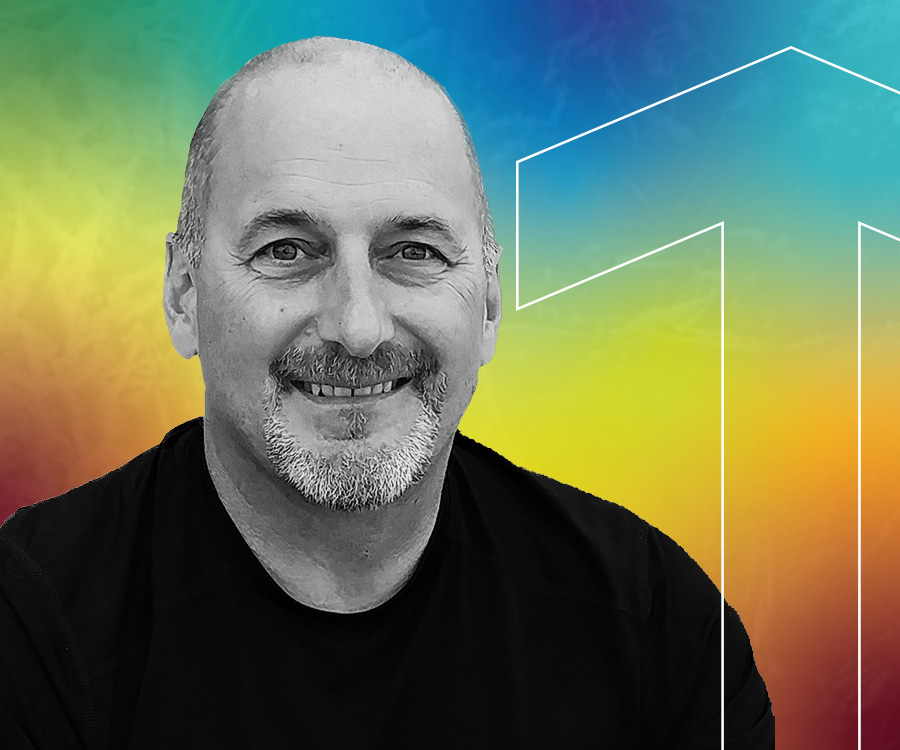CleanTech startup is saving lives one ice crystal at a time
Share This Article!
Canada is home to:
Sadly, we also see:
- 200 deaths per year as a result of cold water immersion,
- the highest number of winter drownings per capita,
- and the length of time one can safely travel some of these ice roads shorten from 70 to 75 days down to 28 to 30 days.
The most significant risk for falling through the ice is when ice is thin and least stable during the beginning and end of winter. In addition, most lakes in southern Canada see more travel activity in the winter months because travel is more accessible, although more hazardous.
The Question:
Dr. Paul Cooley, Scientist and President of NextGen Environmental Research Inc. (NGE), asked, “how do you minimize the risk of ice hazards before heading onto the lake in the winter for travelling, snowmobiling, or ice fishing to make lake ice travel safer?”
The Answer:
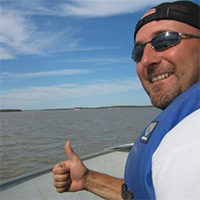
Paul enjoying his time in the field
To answer this question, Paul developed the research that enabled the development of a new monitoring technology that maps lake ice hazards. The North Forge’s Founders Program helped him develop the research into a business.
Paul first heard about North Forge through the National Research Council of Canada Industrial Research Assistance Program (NRC IRAP). “I knew about North Forge for a long time. My initial knowledge about North Forge was that they were a group of well-trained professionals who helped you grow and scale your business, but I didn’t know much more. Our local IRAP representative pointed me towards North Forge and said, ‘you need to go down and talk to them.’ And so I did,” smiled Paul over a Zoom call.
The Tech:
Paul, who is in Ascent – the incubator stage of the North Forge Founders Program, used research to develop an innovative CleanTech measuring solution that uses a combination of artificial intelligence, remote sensing, satellite data analysis, and cloud tech.
“I studied and taught at the University of Manitoba during my Masters and PhD. Many great people are doing new research and publishing that information. One thing that has always been a powerful draw for me has been the need to get research into real people’s hands and help people in their daily lives. Unfortunately, there is often a communication gap that separates the good work of these professionals and communities with this published research.
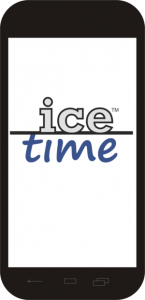
NextGen Ice Time app
I developed an ice hazard advisory service that leverages an app we called Ice Time. It maps water and ice hazards, estimates ice thickness, and shows users time-series images so they can see the ice and water hazards change. This info is then made available to users in as little as 12 hours after the satellite passes overhead.”
“No one else is doing what I’m doing – I’m first into the market,” Paul explained. I discovered this opportunity because of my professional and personal interests in satellite imaging, mapping technology, and ice angling.
“At its core, NGE is a research and development (R&D) company. We use environmental technologies to follow the environment and monitor change. One way that we are different is that we select and aim to commercialize environmental monitoring technologies.
Most people are unaware of satellite radar imaging and what that technology can do. Synthetic Aperture Radar satellites emit energy that doesn’t need light from the sun to form an image. Radar satellites are considered all-weather satellites because they operate at microwave frequencies that “see” at night, through clouds, and in the cold of winter through the snow to the ice.
NGE seeks to solve particular environmental problems, taking those R&D results and making them immediately available to people that can benefit from them to find an innovative new solution. As a result, we are reaching many people who usually wouldn’t have access to this information,” explained Paul.
The Funding:
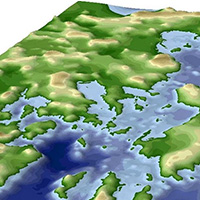
Elevation monitoring in Lake of the Woods
In December of 2021, Dr. Paul Cooley of NextGen Environmental Research Inc. received a $0.67 million multi-year contribution agreement under the smartEarth initiative of the Canadian Space Agency to monitor lake ice and ice hazards.
“We are the first company globally that showed that you can use radar imagery day or night to monitor changes to freshwater and lake ice and the development of hazards.
This funding enables NGE to conduct new studies on lake ice and radar imaging, utilize Canada’s new Radarsat Constellation Mission image data and develop the Ice Time platform to handle a significant amount of near-real-time satellite data.
It feels incredible knowing that we have the support of Canada to help us put cutting-edge research information into the hands of the ice travel community and reduce the risk of ice travel sooner.
There are still too many people out on the ice thinking that ice thickness is the only relevant question.
Our new technology and maps will show you if the ice is still moving, where older and younger ice sheets meet and the thickness changes markedly, and where the remaining open water is. That’s valuable information, especially in the new ice period,” Paul explained.
The Affected Communities:
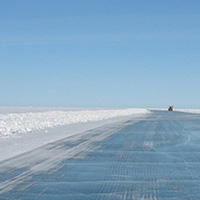
Ice roads traverse many lakes which can benefit from ice hazard monitoring
NGE is working with three types of communities, though his research is not industry-specific. “The first community we are working with is the ice travel community, primarily made up of one of the most significant outdoor activities in North America – angling.
The second is First Nations communities in remote locations that rely on ice travel to get goods, services, and people in and out of their communities and traditional use areas. We’re helping those communities adapt to changes to the ice expected to occur as our climate changes.
The third group is the snowmobiling community, which does a lot of ice travel. The maps we created show open water versus ice and can vastly reduce the number of people driving their snowmobiles onto the lake that isn’t fully frozen yet,” Paul said.
“As our climate warms, new research is being published that indicates significant changes to lake ice can be expected in Canada within the next generation. This is not the distant future. It is likely to affect many of us and our children. Even people experienced on the ice don’t have experience in a warming climate. Ice Time is our guide into that future because you can’t use a calendar to plan your travel anymore”.
The New Path:
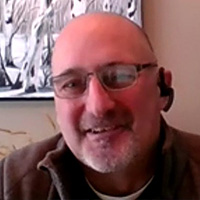
Paul is chatting with North Forge via Zoom from his home office
Starting a new business and developing innovations that help communities thrive is a lonely and challenging path that North Forge Entrepreneurs-in-Residence (EIR), Mike Simpson, and many mentors have helped Paul navigate.
“The time they have shared with me has helped clear my path forward. In addition, they have experience, knowledge, and a track record operating private sector businesses.
It is your venture, and you need to make the decisions at the end of the day. Communication is key to ensuring their background and strengths align with your business drivers and goals.
North Forge has so many people in its network that you’ll find everyone you’ll need to grow your business.
What surprises me most about the North Forge program is its reach in its ability to help you build and scale your company.
The network surrounding them goes from the fabrication lab to EIRS, mentors, and investment funding. The comprehensive level of the network available to you is one of the main things that I didn’t personally appreciate until I joined the program,” explained Paul.
—–
Next Steps:
Are you a scientist ready to turn your research into a business?
We would love to hear from you! Tell us about your idea (don’t worry if you don’t have the answers to all the questions yet), and our Programming Team will contact you to set up a meeting to chat about it.
* Non-disclosure agreement is signed by all North Forge employees.



